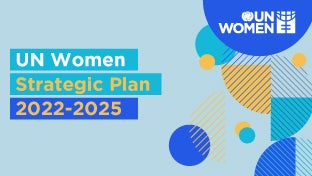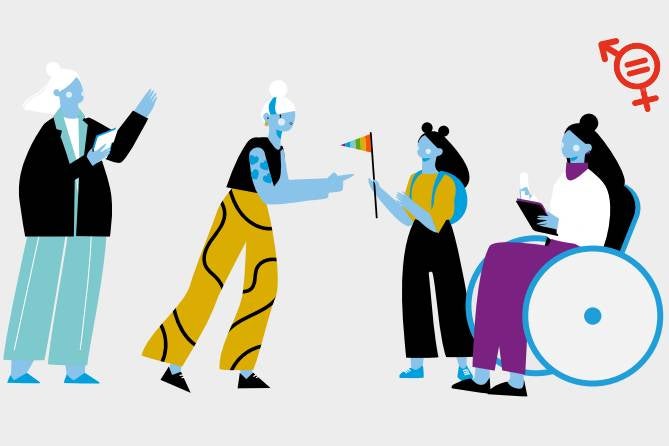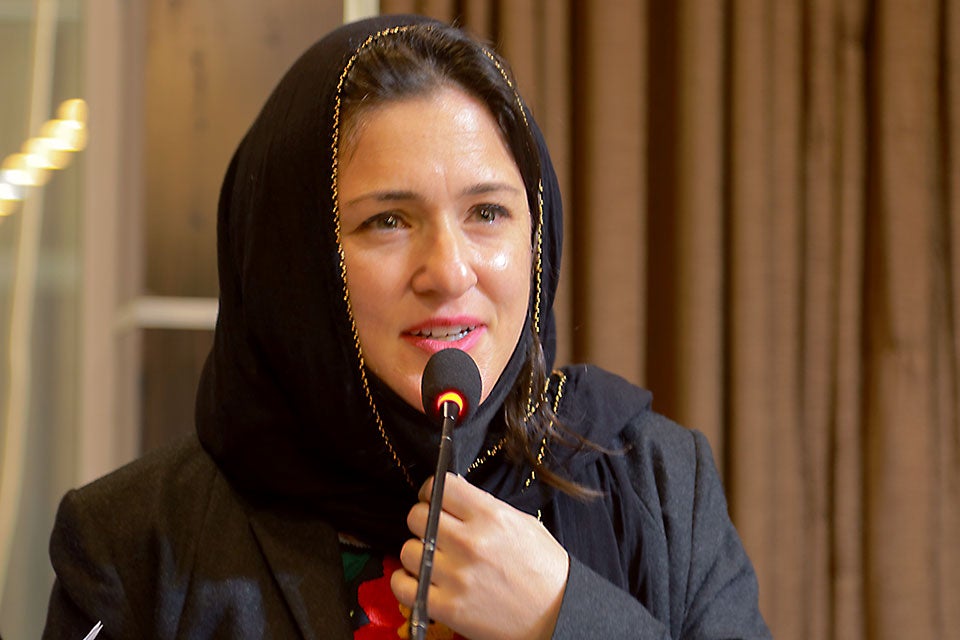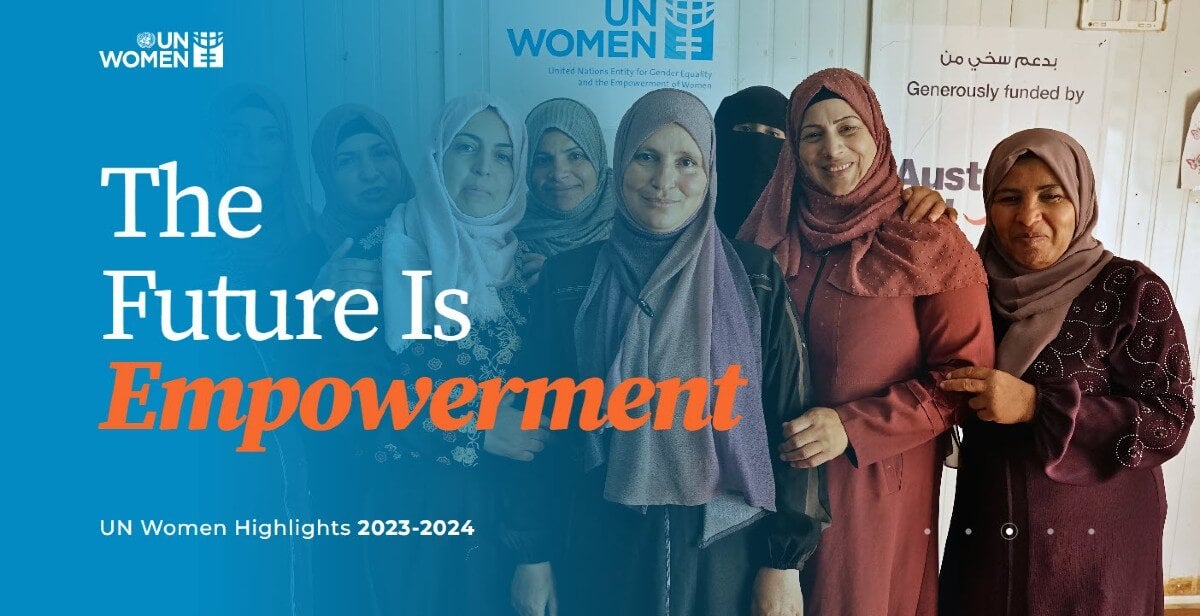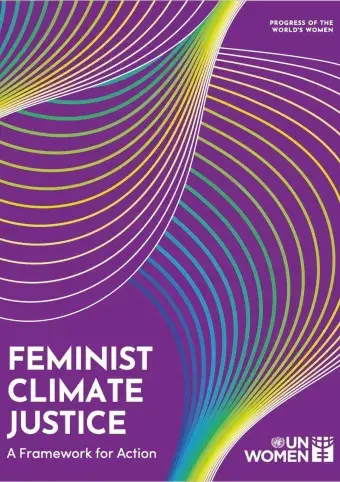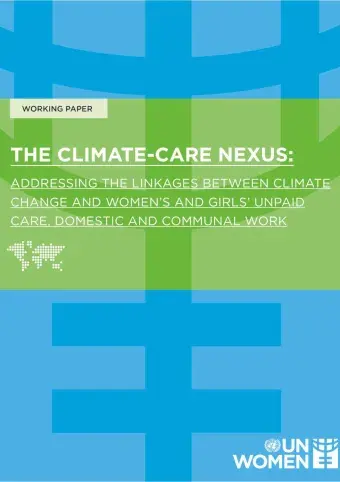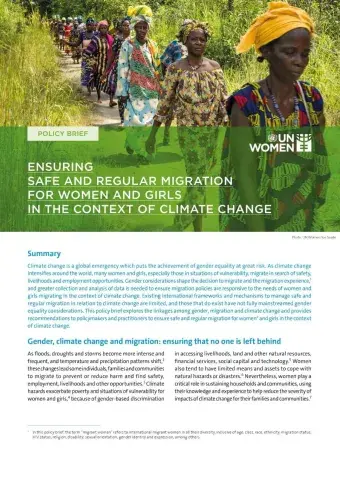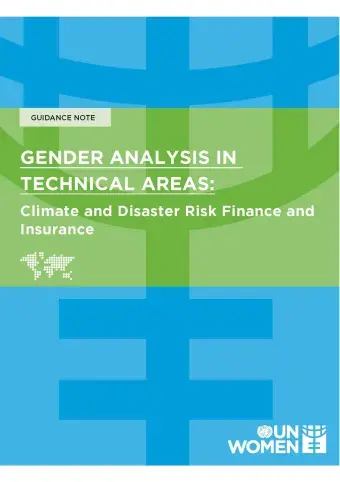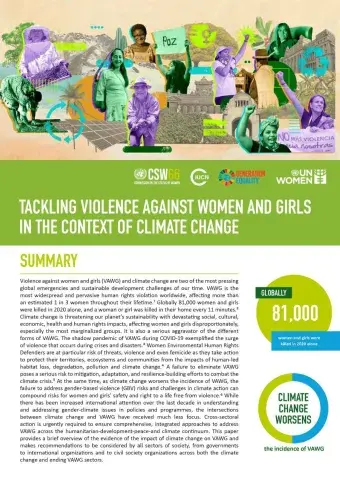SDGs 12–15
Pre-existing inequalities heighten women’s vulnerability to climate change; urgent action is needed.
Last year was the warmest year on record at 1.45°C above the pre-industrial average temperature. Extreme weather led to severe socioeconomic impacts across the world. Women and girls were among the worst affected given pre-existing inequalities and heightened vulnerabilities, particularly those in rural areas. Globally, by 2050, under a worst-case climate scenario, climate change may push up to 158 million, 310 million and 422 million more women and girls into poverty at the $2.15, $3.65 and $6.85 per day international poverty thresholds, respectively (up to 16 million more than the total number of men and boys). Based on data from seven sub-Saharan African countries, every additional day of high temperature exposure is associated with a 2.5 per cent reduction in the total value of crops produced on women’s plots compared to men’s.
+158 million
Climate change may push more than 158 million more women and girls into EXTREME POVERTY
In the Pacific Islands, where most people depend on the environment for livelihoods, evidence shows how climate change affects women and men differently. For example, women and girls suffer physically and mentally due to their lower ability to cope with hazards or disasters. They are less likely to own assets, access financing or have stable sources of income. In Tonga, 92 per cent of women compared to 85 per cent of men exposed to disasters and related hazards have experienced feelings of stress, grief, depression or anxiety. Women in Mongolia are overall more likely than men to see their homes damaged or destroyed by disasters.
With just six years remaining to achieve the global goals, advancing feminist climate justice is crucial. To ensure a gender-just transition towards an environmentally sustainable future, gender-responsive policies are needed to build women’s resilience to climate impacts; channel resources to women’s organizations responding to the environmental crisis; and ensure women’s voices are represented in climate decision-making at all levels.

